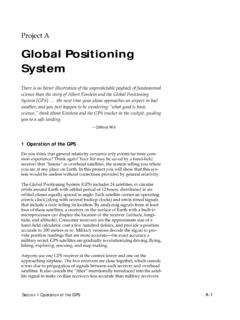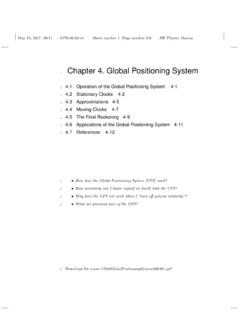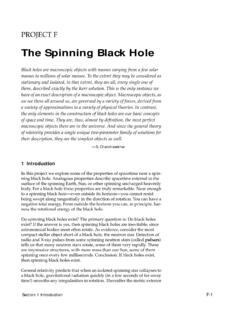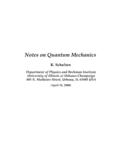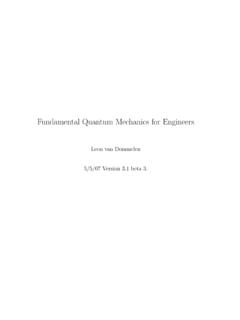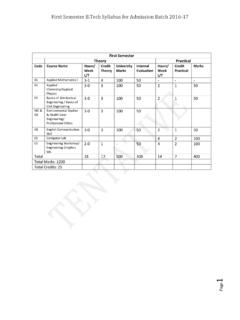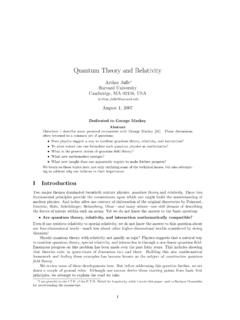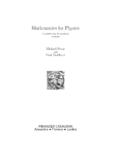Transcription of www.iop.org/journals/physed Quantum physics …
1 physics explainsNewton s laws of motionJon Ogborn1and Edwin F Taylor21 Institute of Education, University of London, UK2 Massachusetts Institute of Technology, Cambridge, MA 02139, USAA bstractNewton was obliged to give his laws of motion as fundamental axioms. Buttoday we know that the Quantum world is fundamental, and newton s lawscan be seen asconsequencesof fundamental Quantum laws. This articletraces this transition from fundamental Quantum mechanics to derivedclassical is common to present Quantum physics and thebehaviour of Quantum objects such as electrons orphotons as mysterious and peculiar.
2 And indeed,in Richard Feynman s words, electrons do behavein their own inimitable way .. in a way that is likenothing that you have ever seen before. (Feynman1965, p 128).But it was also Richard Feynman whodevised a way to describe Quantum behaviour withastounding simplicity and clarity (Feynman 1985).There is no longer any need for the mystery thatcomes from trying to describe Quantum behaviouras some strange approximation to the classicalbehaviour of waves and weturn the job of explaining around.
3 Westart fromquantum behaviour and show how thisexplainsclassical may make you uncomfortable at explain familiar things in terms of somethingunfamiliar? But this is the way explanationshaveto work. Explanations that don t start somewhereelse than what they explain don t explain !In this article we show that quantummechanics actuallyexplainswhy newton s lawsof motion are good enough to predict how footballsand satellites move. For newton , fundamentallaws had to be axioms starting points. For us, newton s laws are seen to beconsequencesof thefundamental way the Quantum world s principle: source of the keyquantum ideaGeometrical optics predicts the formation ofimages by light rays.
4 Examples are images dueto reflection and images formed by eyeglasses andcamera lenses. All of geometrical optics everypath of every light ray can be predicted from asingle principle:Between source and receptionpoint light travels along a path that takes theshortest possible time. This is calledFermat sprincipleafter the Frenchman Pierre de Fermat(1601 1665).A simple example of Fermat s principle is thelaw of reflection: angle of incidence equals angleof reflection. Fermat s principle also accountsfor the action of a lens: a lens places differentthicknesses of glass along different paths so thatevery ray takes thesame timeto travel from apoint on the source to the corresponding point onthe image.
5 Fermat s principle accounts for howa curved mirror in a telescope works: the mirroris bent so that each path takes thesame timetoreach the focus. These and other examples arediscussed in theAdvancing PhysicsAS Student sBook (Ogborn and Whitehouse 2000).Fermat s contemporaries had a fundamentalobjection to his principle, asking him a profoundquestion, How could the light possibly know inadvance which path is the quickest? The answer26 PHYSICSEDUCATION40(1)0031-9120/05/010026 +09$ 2005 IOP Publishing LtdQuantum physics explains newton s laws of motiongoes very deep and was delivered fully only in thetwentieth century.
6 Here is the key idea:The lightexplores all possible paths between emission andreception. Later we will find a similar rule formotion of atomic particles such as the electron: aparticle exploresall possible pathsbetween sourceand detector. This is the basic idea behind theformulation of Quantum mechanics developed byRichard Feynman (1985).The idea of exploring all possible paths raisestwo deep questions: (1) What does itmeantoexplore all paths?(2) How can explore allpaths be reconciled with the fact that everydayobjects (such as footballs) and light rays followunique single paths?
7 To answer these questionsis to understand the bridge that connects quantummechanics to newton s doesExplore all paths!mean?The idea of exploring all paths descends fromChristiaan Huygens idea of wavelets (1690).Huygens explained the propagation of a wavefrontby imagining that each point on the wavefrontsends out a spherical could thenshow that the wavelets reconstitute the wavefrontat a later time; the parts of the wavelets goingeverywhere else just cancel each other out. In 1819the French road and bridge engineer AugustinFresnel put the idea on a sound mathematicalbasis and used it to explain optical diffraction andinterference effects in precise the 1940s Richard Feynman (following ahint from Dirac) adapted Huygens idea to givequantum physics a new foundation, starting withthe Quantum of light: thephoton.
8 Nature s simplethree-word command to the photon isExplore allpaths!; try every possible route from source todetector. Each possible path is associated with achange of phase. One can imagine a photon havinga stopclock whose hand rotates at the classicalfrequency of the light. The rotation starts whenthe photon is emitted; the rotation stops when thephoton arrives at the detector. The final positionof the hand gives an arrow for that photon explores all paths betweenemission event and a possible detection event.
9 Thearrows for all paths are to be added head-to-tail(that is, taking account of their phases, just aswavelets are to be superposed) to find the totalresultant Quantum amplitude (resultant arrow) foran resultant arrow describes theemission of a photon at one place and time and itsdetection at a different place and time. (There arealso rules for how the length of the arrow changeswith distance, which yield an inverse square lawof intensity with simplicity weconsider only cases where the distances vary littleand changes in arrow length can be ignored.)
10 The resultant arrow determines the probabil-ity of the event. The probability is equal to the(suitably normalized) square of the length of thearrow. In this way the classical result that the in-tensity is proportional to the square of the waveamplitude is have outlined Feynman s simple and vividdescription of Quantum behaviour for a effect he steals the mathematics of Huygens wavelets without assuming that there are Huygens, wavelets go everywhere becausethat is what waves do. For Feynman, photons goeverywhere because that is what photons bridge from Quantum to classicalphysicsThe next question is this: How can Nature scommandExplore all paths!
